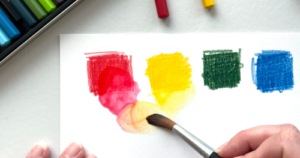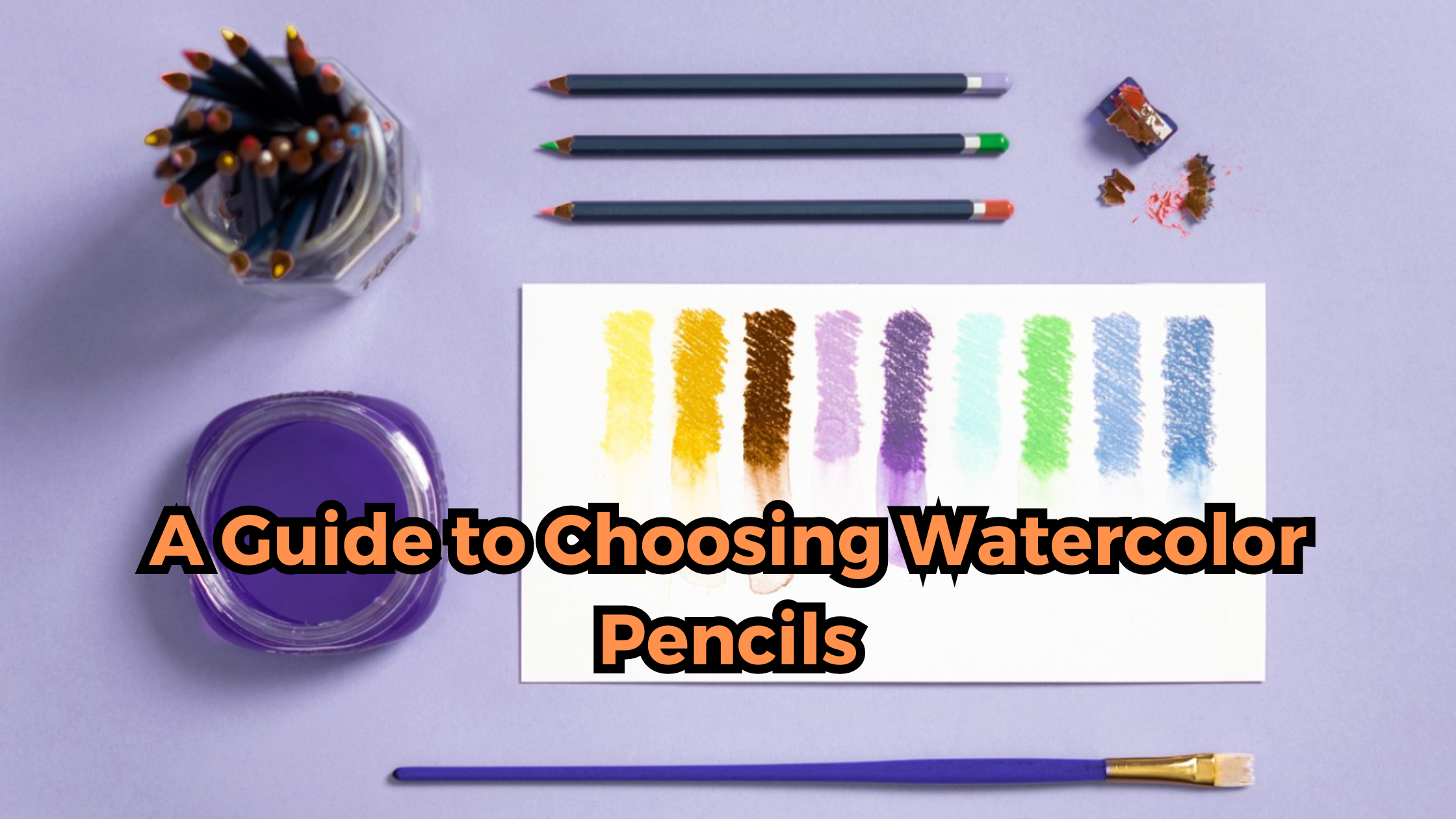Watercolor Pencils have become an invaluable tool for painters, combining the precision of colored pencils with the fluidity of watercolors. With over a decade of artistic expertise, I’ve experimented with many kinds and types of watercolor pencils, understanding what works best for various artistic styles. In this article, I’ll walk you through the steps of selecting the best watercolor pencils for your art, taking into account criteria like coloration, solubility, and paper compatibility.

Understanding Watercolor Pencils
Watercolor pencils are colored pencils with a water-soluble binder that allows you to produce watercolor-like effects when wet. They are available in a variety of colors and can be applied dry or wet for more dramatic results. The key is to select the proper set for your artistic requirements.
Pigmentation:
When choosing watercolor pencils, consider the intensity and richness of the color. Look for pencils with rich pigmentation that holds its shine even after being wet. Experiment with a few colors before committing to a full set to ensure they satisfy your color quality standards.
Lightfastness:
As a seasoned artist, you recognize the significance of lightfastness – the capacity of pigments to resist fading when exposed to light. To ensure the endurance of your artwork, check the lightfastness rating of the watercolor pencils. Invest in high-quality pencils with outstanding lightfastness to ensure that your work lasts for years.
Solubility:
The solubility of watercolor pencils governs how easily they dissolve when wet. Some painters choose pencils with high solubility for a smoother transition from pencil to paint, while others prefer less soluble pencils to keep their pencil lines distinct. Consider your chosen technique and make your selection appropriately.
Blendability:
A good set of watercolor pencils should have outstanding bendability, allowing you to create smooth color transitions. Examine the pencils to see how nicely they mix when dry and when wet. This is especially useful if you like to use gradients and subtle transitions in your graphics.

Picking the Best Paper:
The paper you use can have a big impact on how well your watercolor pencils work. Experiment with different types of watercolor paper to find one that works well with your pencils. To attain the desired outcomes, consider the weight, texture, and absorbency of the paper.
Weight:
Heavier weight sheets (140 lb/300 gsm or greater) are best for watercolor pencil work because they can resist moist application without warping. Lighter papers may buckle, which will alter the overall appearance of your artwork.
Texture:
How the watercolor pencils cling to the surface is affected by the texture of the paper. Cold-pressed watercolor paper has a rough surface that improves pencil grip and allows for more detailed drawing. Hot-pressed paper, on the other hand, has a smoother surface and a distinct appearance.
Absorbency:
When working with watercolor pencils, consider the absorbency of the paper. Some papers absorb more water, resulting in a softer, diffused appearance, whereas others repel water, resulting in a sharper pencil line. Experiment with various papers to find the one that best suits your artistic style.
Maintaining Your Tools:
Watercolor pencils should be cared for properly to preserve their longevity and consistency of performance. Here are some pointers to remember:
1. Sharpening: To retain a fine tip, use a sharpener made exclusively for colored pencils. Dull pencils can impair your work’s precision, especially when fine details are involved.
2. Storage: Keep your watercolor pencils in a cool, dry area to avoid weakening or becoming brittle. A pencil case or container will protect your pencils from damage.
3. Cleaning: When switching between colors, thoroughly clean your brushes to minimize unintended color mixing. This is especially true when working with a limited color pallet.
Conclusion:
Choosing the best watercolor pencils for your art requires a balance of personal taste and technical concerns. Experimentation is essential for achieving the ideal balance of pigmentation, solubility, and blendability. Understanding how different materials interact with watercolor pencils also allows you to modify your approach to attain the desired results. Watercolor pencils can improve your artwork by adding depth and dimension with the correct tools and techniques. Remember that the beauty of creating rests not only in the result but also in the process of research and discovery as you embark on your artistic journey.
To learn more about art, visit SILPAVAT.IN


